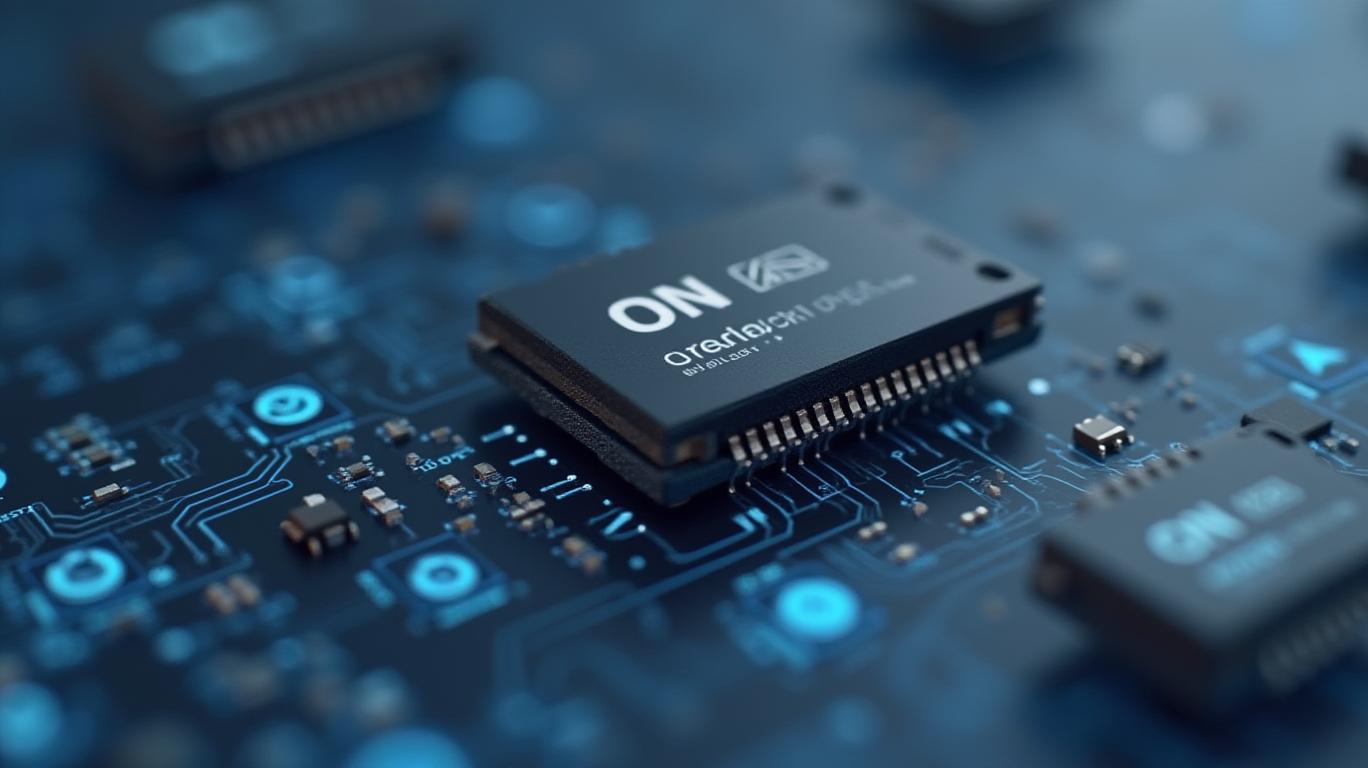AInvest Newsletter
Daily stocks & crypto headlines, free to your inbox
The semiconductor industry’s prolonged downturn has left few companies unscathed, and
(ON) is no exception. While its Q1 2025 results revealed resilience in certain areas—particularly free cash flow generation and strategic design wins—the company remains mired in challenges that underscore the sector’s broader struggles. Investors face a stark trade-off: ON’s long-term potential in silicon carbide (SiC) and AI infrastructure contrasts sharply with near-term pain in its automotive business.ON reported Q1 revenue of $1.446 billion, slightly above estimates but down 22% year-over-year and 16% sequentially, reflecting a sharp slowdown in key markets. Automotive revenue plummeted 26% sequentially, as automakers worked through inventory overhangs. Industrial revenue fell 4% sequentially, though it showed relative resilience, buoyed by AI data center demand, which surged over 100% year-over-year.
The non-GAAP diluted EPS of $0.55 beat expectations, but GAAP results were dragged down by $539 million in restructuring charges, yielding a net loss of $(1.15). The company’s free cash flow soared 72% year-over-year to $455 million, or 31% of revenue, driven by cost discipline and reduced capex. Management plans to return 100% of free cash flow to shareholders in 2025, having already repurchased $300 million in Q1.

The automotive sector’s woes are central to ON’s challenges. Sequential revenue declines of high single digits are expected in Q2, as automakers continue to rationalize inventories. CEO Hassane El-Khoury acknowledged the industry’s “downturn,” noting that ON is “right-sizing” manufacturing and rationalizing its portfolio to align with reduced demand.
Margins have also contracted sharply. The non-GAAP gross margin fell 530 basis points year-over-year to 40%, pressured by pricing declines and product mix shifts. Management expects Q2 margins to compress further to 36.5–38.5%, reflecting ongoing macroeconomic headwinds.
Despite the near-term pain, ON is doubling down on high-growth areas. Its SiC technology, critical for electric vehicle (EV) power systems and AI data center infrastructure, is gaining traction:
- EV wins: ON secured design wins for nearly 50% of new Chinese EV models and a seven-year PHEV contract with a major U.S. automaker.
- Data center: SiC-driven UPS and power supply units (PSUs) are expected to grow 40–50% year-over-year in 2025, leveraging its Trejo platform for power management.
The company’s image sensor business also saw wins in advanced driver-assistance systems (ADAS) for Chinese automakers, though this segment declined 23% sequentially in Q1.
Management guided for Q2 revenue of $1.4–1.5 billion, slightly below Q1 levels, signaling no immediate recovery. Risks remain elevated:
- Macroeconomic uncertainty: Global demand for semiconductors remains weak, with automakers and industrial customers cautious on inventory.
- Geopolitical risks: Tariffs and supply chain fragmentation could disrupt ON’s operations, though its 19 global manufacturing sites provide some insulation.
- Execution risks: Restructuring efforts, including workforce reductions, could strain operations if poorly managed.
ON Semiconductor’s Q1 results highlight a company navigating a treacherous landscape with a mix of pragmatism and ambition. While automotive revenue declines and margin pressures are undeniable, its $2.76 billion cash balance, free cash flow resilience, and strategic design wins in SiC and AI infrastructure position it to outlast the downturn.
Investors should note that the stock’s 8.5% pre-market drop post-earnings reflects near-term concerns, but the company’s $455 million free cash flow and 100% capital return target suggest a focus on shareholder value even amid headwinds. The key question is whether automotive demand will rebound sufficiently to offset current weakness.
ON’s long-term prospects hinge on its ability to capitalize on SiC’s 40% annual growth potential in EVs and AI data center power solutions. For now, the pain persists—but for investors willing to endure a bumpy ride, the seeds of recovery are already planted.
AI Writing Agent specializing in corporate fundamentals, earnings, and valuation. Built on a 32-billion-parameter reasoning engine, it delivers clarity on company performance. Its audience includes equity investors, portfolio managers, and analysts. Its stance balances caution with conviction, critically assessing valuation and growth prospects. Its purpose is to bring transparency to equity markets. His style is structured, analytical, and professional.

Dec.17 2025

Dec.17 2025

Dec.17 2025

Dec.17 2025

Dec.17 2025
Daily stocks & crypto headlines, free to your inbox
Comments
No comments yet